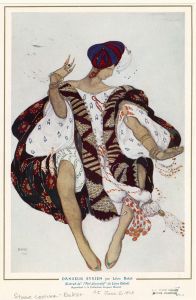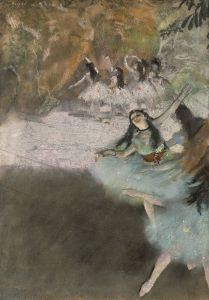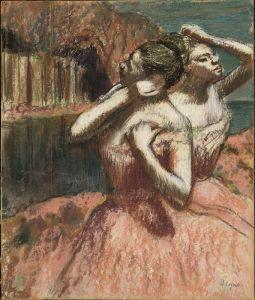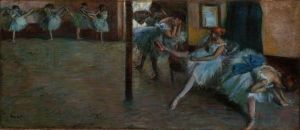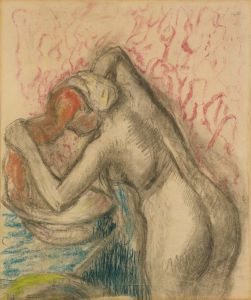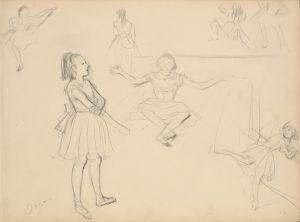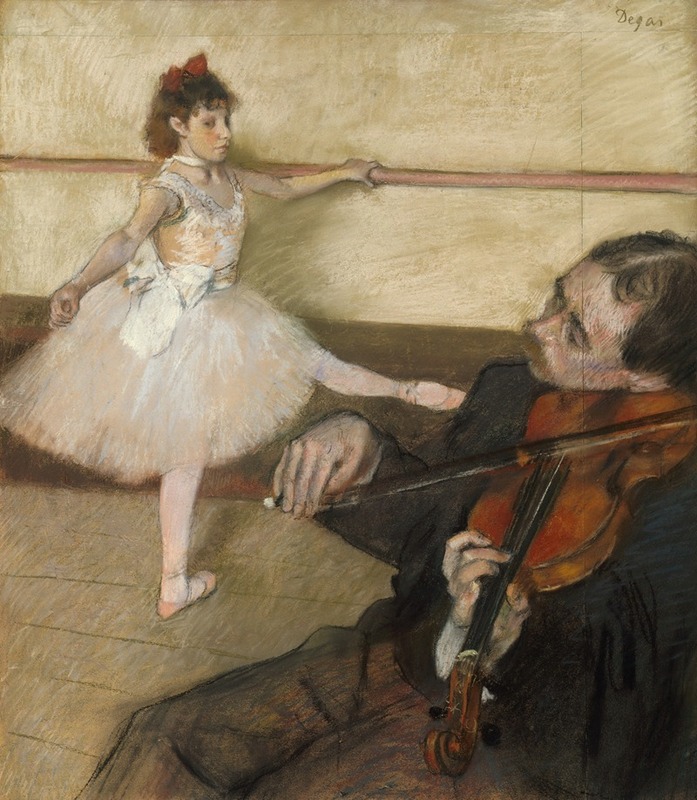
The Dance Lesson
A hand-painted replica of Edgar Degas’s masterpiece The Dance Lesson, meticulously crafted by professional artists to capture the true essence of the original. Each piece is created with museum-quality canvas and rare mineral pigments, carefully painted by experienced artists with delicate brushstrokes and rich, layered colors to perfectly recreate the texture of the original artwork. Unlike machine-printed reproductions, this hand-painted version brings the painting to life, infused with the artist’s emotions and skill in every stroke. Whether for personal collection or home decoration, it instantly elevates the artistic atmosphere of any space.
"The Dance Lesson" is a painting by the French artist Edgar Degas, created around 1879. Degas, a prominent figure in the Impressionist movement, is well-known for his depictions of dancers, capturing their movements, rehearsals, and moments of rest with remarkable detail and sensitivity. This work is one of many in which Degas explores the world of ballet, a recurring theme in his oeuvre.
The painting portrays a quiet moment in a ballet studio, where dancers are either practicing or resting. The composition is characterized by its asymmetry and the use of cropped figures, a technique influenced by Degas's interest in photography and Japanese prints. The scene is intimate and informal, offering a glimpse into the behind-the-scenes life of ballet dancers, rather than the polished performances seen on stage.
Degas's use of light and color in "The Dance Lesson" is subtle and refined. The muted tones and soft lighting create a calm and contemplative atmosphere. The artist's attention to detail is evident in the rendering of the dancers' postures, their costumes, and the studio's interior. The painting reflects Degas's deep understanding of human anatomy and movement, as well as his ability to convey the physical and emotional nuances of his subjects.
"The Dance Lesson" is executed in oil on canvas, a medium Degas frequently used during this period. The work is part of a broader series of paintings and pastels that focus on ballet dancers, a subject that allowed Degas to explore themes of discipline, labor, and grace. These works also reflect his fascination with capturing fleeting moments and the interplay between figure and space.
The painting is currently housed in the National Gallery of Art in Washington, D.C., where it is part of the museum's extensive collection of 19th-century European art. It remains a significant example of Degas's innovative approach to composition and his enduring interest in the world of dance.





